|
|
|
|
 |
248
Rome celebrates its 1,000th
anniversary |
 |
1271

Marco Polo journeys to China to open
trade routes between Europe and the Orient. |
 |
1492
Ferdinand and Isabella of
Spain finance the voyage of 41-year old Italian Christopher Columbus to
find new trading routes to India. He ends up discovering the Bahamas and
Cuba. |
 |
1541 
|
|
Hernando de Soto
discovers the Mississippi River. |

|
1681
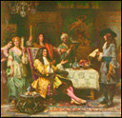 |
|
Charles II, King
of England, grants territory for the establishment of Pennsylvania to William
Penn, a 37-year-old English Quaker. |
|
|

|
1755
French and Indian War begins.
Ends in 1763. |
|
|
 |
 1764
1764
|
|
Mozart, 8 years
old, writes his first symphony. |
 |
 1775
1775
|
|
Revolutionary War
begins.
Ends in 1783. |
|
|
|
|
|
|
|
|
|
|

|
8,000
BC
Last glacier recedes from
western PA and southwestern NY, combining three separate and distinct "little
Alleghenies" into one river; reshapes the configuration of the Monongahela
and Ohio Rivers as well. |
 |
200
The Aquanushioni, later
known to the French as the Iroquois, also known as the Six
Nations, maintain a long-established lodge in Punxsutawney.
|
 |
200

The above pie-chart shows 100 percent
of the original forest remaining in the Allegheny Watershed. |
|
|
|
|
|
|
 |
1669
LaSalle, French trapper and
explorer, is the first European to discover and write of the Ohio River.
He calls it "Belle Riviere," or Beautiful River. |
 |
1749
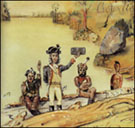 |
|
Capt. Celoron de Blainville, dispatched by the Governor-General of New France
(Canada), takes possession of the Ohio River Valley by travelling the rivers
and burying engraved lead plates that claim French ownership of the territory.
The fist plate was buried along the Conewango River south of Lake Chatauqua.
Others were buried along the Allegheny and Ohio Rivers. |
 |
1754
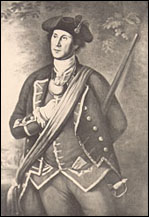 |
|
British Major George Washington, 21, travels to Fort LeBoeuf (now Waterford)
with a message from the English Governor of Virgina demanding that the French
leave the Ohio Valley. On the return trip, Washington and his guide, Cristopher
Gist, nearly die when their raft breaks up in the icy Allegheny River. Excerpt
from Washington's own journal.
|
 |
1760
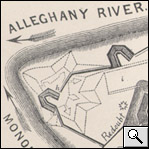
At the confluence of the Allegheny
and the Monongahela Rivers, Fort Pitt, a large, ambitious fort, is built
near the burnt ruins of Fort Duquesne last occupied by (defeated) French.
|
 |
1762
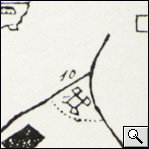
Wingenund, Munsee Indian prophet,
draws a map on sugar maple bark that shows the three rivers, Fort Pitt,
the settlement of "Pittsboro," the extent of British Occupation, and the
Munsee Turtle of Creation. |
|
|
|
|
 |
1780
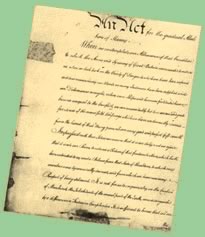
|
|
Gradual
Abolition Act orders owners to free all slaves born after March 1, 1780,
within 28 years. In western PA, enforcement was delayed until the 1783 settlement
of a 30-year-long boundary dispute with Virginia. In 1783, 795 slaves were
registered in Westmoreland County; in 1790, 128 slaves. Slave holdings in
Allegheny County decreased from 79 in 1800 to 0 by 1840. |
 |
1787
Pennsylvania declares statehood,
December 12. |
 |
1787
University of Pittsburgh,
then called "Pittsburgh Academy," is founded in a log cabin. |
 |
1791
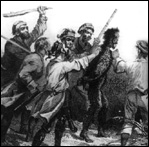
|
|
Whiskey Rebellion started in Berlin, PA, at the headwaters of Stoney Creek,
when the federal government imposed a tax on the chief export of the time:
whiskey. Illustration shows tax official being tarred and feathered by Insurrectionists
(farmers) after their peaceful petitions against excess taxation failed.
|


 1764
1764 1775
1775







